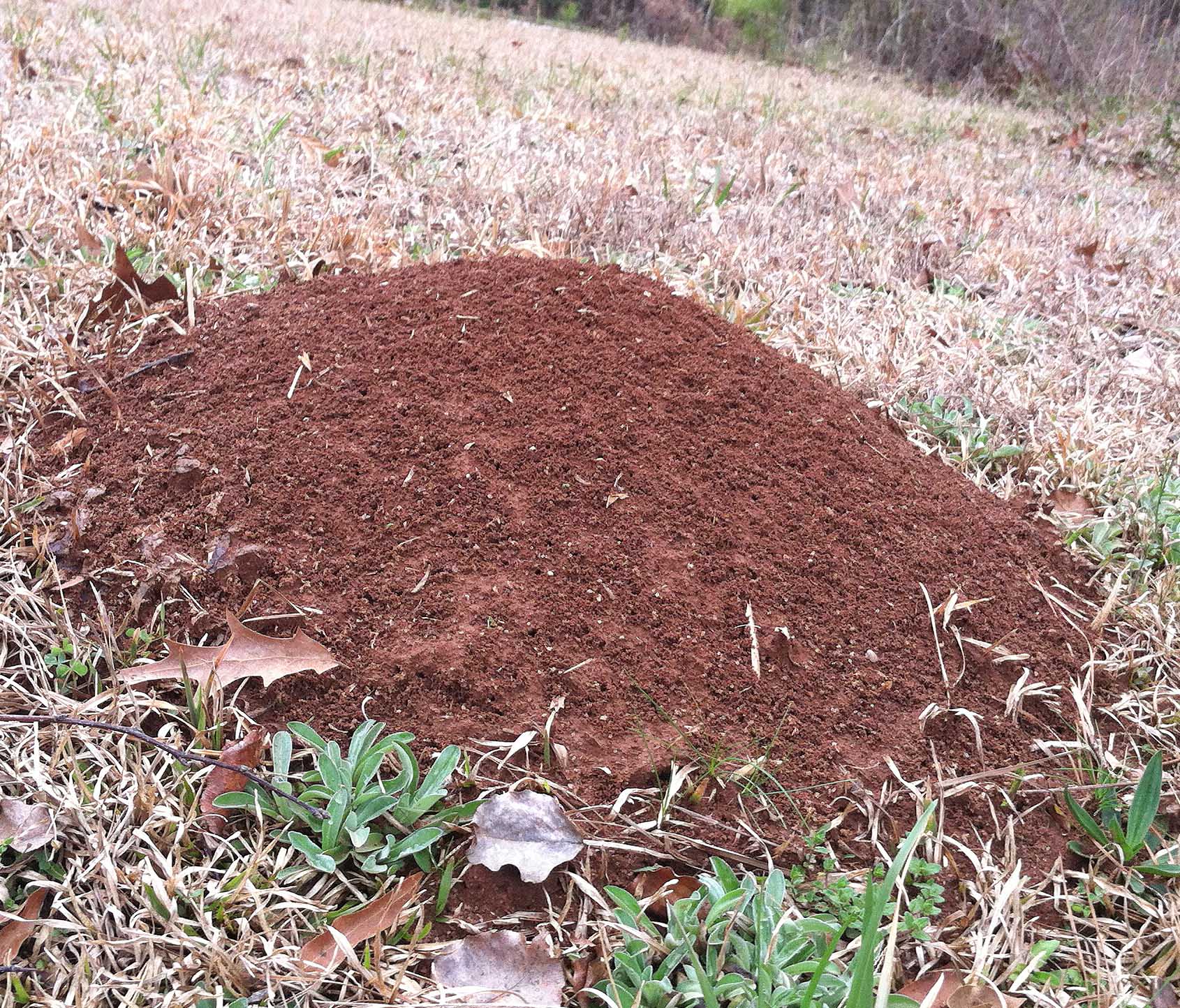Fall is perfect for playing football, picking pumpkins and killing fire ants. Tackling the stinging pests now will cut down on the number you encounter next spring and summer, according to entomologists with the University of Georgia.
“When fire ants sting, they release toxins that cause blisters, prolonged agony and even possible allergic reactions,” said Wayne Gardner, a research entomologist with the UGA College of Agricultural and Environmental Sciences.
Gardner, and his colleague UGA Extension entomologist Dan Suiter, should know. They study fire ants and ways to control the pests as part of the urban entomology research program on the UGA campus in Griffin, Ga.
They know, for instance, that the easiest time for homeowners to go after fire ant colonies is in the fall.
Treat in the fall
Fire ant colonies reach their peak in the fall having grown throughout the summer months, Suiter said.
The ants tend to be most active in the spring and fall, when daytime temperatures are between 70 and 85 degrees. In the fall, they spend a lot of time foraging for food. Actively foraging ants will pick up bait and carry it into the nest within the first hour or two.
Another reason to treat the pests in the fall is their location.
“The ants aren’t too deep in the ground and this makes it easier to kill with a mound-drench, granular or dust,” Suiter said. “When using these products it’s critical to treat when the queen and brood are close to the surface.”
Broadcast bait
UGA specialists recommend treating fire ants by first broadcasting a fire ant bait.
“Follow the product label carefully,” Suiter said. “When properly applied, this should suppress about 90 percent of the ants.”
Apply the bait either across the home lawn or in a 4-foot circle around each fire ant mound. Use care not to disturb the mounds.
Fire ants can smell smoke
Never apply bait using a spreader that’s been used to spread fertilizer. The bait's scent can be altered by the fertilizer residue.
“If you smoke and get smoke smell on the bait, the ants won’t touch it. Or if you have gasoline on your hands, the ants won’t touch it,” Suiter said.
Wear gloves and use only a new spreader dedicated to treating fire ants, he said.
Bait products do not protect against reinvasion by ant colonies from surrounding land or by newly mated queens. Ant populations can fully recover within 12 to 18 months of the last bait treatment, Suiter said. Low-lying, moist and flood-prone areas are more prone to reinfestation.
Hit them with a second treatment
After a week to 10 days, kick the ant mounds or poke them with a stick and step back quickly. If there is any ant activity, apply a contact insecticide to target the mounds.
“Get a long stick and run it down through the center of the mound,” Suiter said. “It should push like a hot knife through butter. Pull the stick out quickly and pour in the premixed insecticide.”
Be prepared to pour the insecticide quickly as the ants will scatter once the mound is disturbed. A premixed gallon or two of insecticide should fill the mound from the bottom up.
Gardner says dusts or powders can also be sprinkled on the surface of the mound if you prefer dry treatments.
“One really excellent one is Orthene (acephate) which is actually packaged and sold for fire ant control,” he said. “For those colonies that might survive the bait treatment, a second treatment of the mound with this material is an excellent idea.”
The Texas Two-Step Method
The worker ants find the powder, carry it into the mound and expose their nest mates and food supply, he said. This method is called the Texas Two-Step Method and was developed by urban entomologist Mike Merchant of Texas A&M University.
“It’s basically Amdro followed by Orthene,” Gardner said.
Fire ants were first reported in Georgia in the 1950s. Their mating-flights have taken them as far east as North Carolina and as far west as Texas. The ants have also spread through nursery plant material to states like Arizona and California.
For more advice on controlling household pests, contact your local UGA Cooperative Extension agent at 1-800-ASK-UGA1 or search “fire ants” at extension.uga.edu/publications/.






.png)
